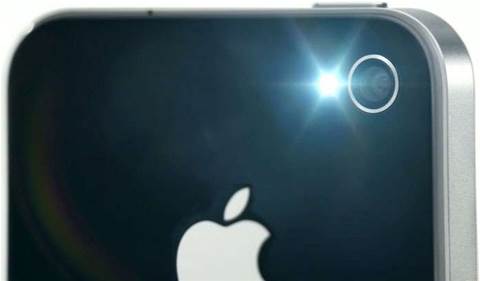Apple has unveiled its fifth-generation smartphone to the masses in an attempt to maintain triple-figure growth for the product line-up.
The iPhone 4S, launched this morning at Apple's Cupertino headquarters, retained the same shape and basic design as its predecessor but added a faster processor, eight-megapixel camera and a voice command assistant feature.
The iPhone 4S would be released on October 14 in Australia.
Telstra, Optus and Vodafone Hutchison Australia were asked for local release details.
Phil Schiller, Apple's senior vice president of worldwide product marketing, said the phone was "all new" inside.
It included Apple's custom A5 chip, also used in the iPad 2, which would make the phone twice as fast as its predecessor for CPU tasks and seven times faster for graphics due to its dual-core.
Despite the speed boost, Apple said the phone would provide eight hours of talk time on 3G networks and nine hours of browsing over wi-fi networks.
The phone would support dual-carrier HSPA networks up to 14.4 Mbps downlink and operate over CDMA networks, eliminating the need for Apple to support two phones in the US where it had partnered with AT&T and Verizon.
"This is what our competitors call 4G. We're not going to debate it," Schiller said.
The phone would come with the latest version of Apple's smartphone operating system, iOS 5, which would also be made available for previous devices on October 12.
The new operating system would not support the first two generations of iPhone or iPod touch.
It would come with an additional software feature, however, enabling users to ask questions of a built-in assistant using voice recognition. Apple integrated the "Siri" feature after acquiring a company by the same name last year.
iPhone 4 accounted for half of all iPhones sold by Apple and a large proportion of the more than 250 million total iOS devices sold to date.
Apple's market share in the US alone has grown 125 percent year-on-year, compared to 74 percent for the general smartphone market.
The iPhone accounted for five percent of the worldwide mobile phone market, according to Apple chief executive Tim Cook.
iPod changes
Apple also used the event to unveil minor updates to its iPod line of products, including user interface changes for the iPod nano and cheaper prices for the iPod touch in the US.
It dispelled rumours that the iPod product line - approaching its tenth anniversary and having sold 300 million units globally - was reaching its final years.
"We still love music, and we're still making great iPods," Schiller said.
Analysts decide
The announcement this morning went by without mention of a redesigned, fourth-generation capable iPhone 5, as had been suggested in continued rumours over past weeks.
The lack of more significant changes drew mixed reactions from those following the announcement, with investors shaving more than 3 percent off Apple's share price.
However, Gartner vice-president of reseach Van Baker told iTnews that the combination of the internal redesign in the iPhone 4S and the introduction of lower price points for the iPhone 3GS and 4 would likely continue Apple's sales streak for the smartphone.
"No individual thing jumps out at me as something you're going to go 'wow' to, but... when you take the whole thing as a package, it's a pretty impressive announcement," he said.
"Yes, there will be some people who were hoping for a new industrial design, who see a phone as a fashion statement, who will be disappointed that the design stays the same. It's all new on the inside though."
The introduction of the Siri voice command feature would likely hit a note with a particular demographic - particularly heavy commuters - and would likely prove a heavy opportunity for new sales, according to Baker.
"There's no question it's the best voice recognition capability on the market today," he said.







_(11).jpg&h=142&w=230&c=1&s=1)


.jpg&w=100&c=1&s=0)
_(8).jpg&w=100&c=1&s=0)









.jpg&q=95&h=298&w=480&c=1&s=1)


